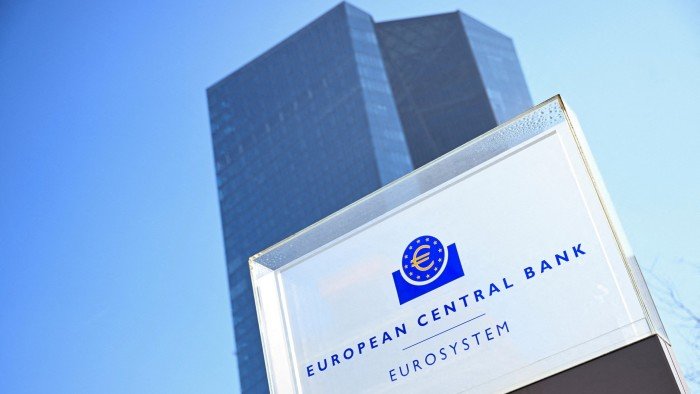The ECB must remain pragmatic in setting rates

Unlock the Editor’s Digest for free
Roula Khalaf, Editor of the FT, selects her favourite stories in this weekly newsletter.
The writer is the governor of the Bank of Italy
In a statement earlier this month, the European Central Bank’s governing council noted that policy rates are becoming “meaningfully less restrictive”. This means they are gradually approaching a neutral level, or “R-star” as it is known by economists.
Neither stimulating nor restraining economic activity, this level is the short-term interest rate that keeps inflation stable and employment full once temporary shocks dissipate. In theory, once a central bank reaches this equilibrium, it can hold steady — unless a new shock disrupts the balance.
The problem? R-star is a moving, invisible target. It shifts over time, shaped by slow-moving structural forces such as demographics, technological progress and risk preferences. Worse still, it can only be estimated through surveys or models, both riddled with uncertainty. For the euro area, current estimates range between 1.5 and 2.5 per cent in nominal terms.
This puts central bankers in a bind. On the one hand, R-star is essential: policy rates can only be deemed “expansionary” or “restrictive” relative to it. On the other, it is elusive: an uncertain, ever-changing benchmark is a shaky foundation for policymaking.
To navigate this uncertainty, central banks must use R-star pragmatically. When policy rates need to be far from neutral, even rough estimates are helpful. In 2022-23, the ECB knew rates were well above neutral — deliberately so, to combat inflation. With them at 4 per cent, even a 1 percentage point margin of error around R-star did not change its assessment: the stance was clearly “restrictive”.
But as inflation falls and rates approach neutral, uncertainty becomes a problem. Policymakers enter a “grey zone” where monetary policy may seem as expansionary or restrictive depending on which R-star estimate they use, rendering the estimates useless.
Think of a GPS with a 5km margin of error. If you’re 500km away from your destination, it provides clear direction. At 50km it is still useful. But when you’re just a few kilometres away, its inaccuracy becomes a liability.
Fortunately, there is a workaround. As R-star estimates become less useful, inflation projections tend to become more reliable. In 2022-23, the ECB’s projections were wildly off, due to shocks — such as soaring energy prices — that upended forecasting models. But by 2024, with inflation steadily declining towards target, projections regained accuracy and credibility.
This suggests a simple rule of thumb. When rates need to be far from neutral, lend weight to R-star estimates. They won’t allow a precise calibration of the stance, but they help assess whether monetary policy is expansionary or restrictive.
When rates are near neutral, focus on inflation projections and the broader macroeconomic outlook. If interest rates fall within the R-star’s grey zone, inflation is declining towards target, and growth remains weak, chances are that policy is still restrictive.
The ECB’s primary mandate is price stability. Neutral rate estimates offer useful context, but shouldn’t dictate policy. At this stage, inflation projections provide better guidance.
Right now, the ECB faces a delicate balancing act. On one side, economic weakness is putting downward pressure on inflation. Disappointing GDP figures and weak consumer confidence have become defining traits of the Eurozone. A prolonged stagnation could push inflation below the ECB’s 2 per cent target. Global tensions may further discourage consumption and investment.
On the other side, new powerful sources of uncertainty are emerging. A temporary surge in energy prices earlier this year carried unsettling echoes of 2022. The spectre of tariffs — real or hypothetical — dominates the headlines. Meanwhile, Germany’s suspension of its “debt brake” and a common European defence plan could introduce a powerful fiscal stimulus. Shocks are abundant and far from dissipating — hardly the situation for R-star to be a guiding reference.
In this landscape, fixating on whether the stance should be qualified as “restrictive” risks keeping attention on the R-star galaxy when our gaze should focus on the inflation horizon — and on whether the stance is appropriate to reach the 2 per cent target.
Overall, macroeconomic indicators and projections suggest there is still work to do. But given the many “known unknowns” clouding the outlook, determining precisely how much and when remains extraordinarily complex. The ECB must remain pragmatic and data-driven.
Source link



